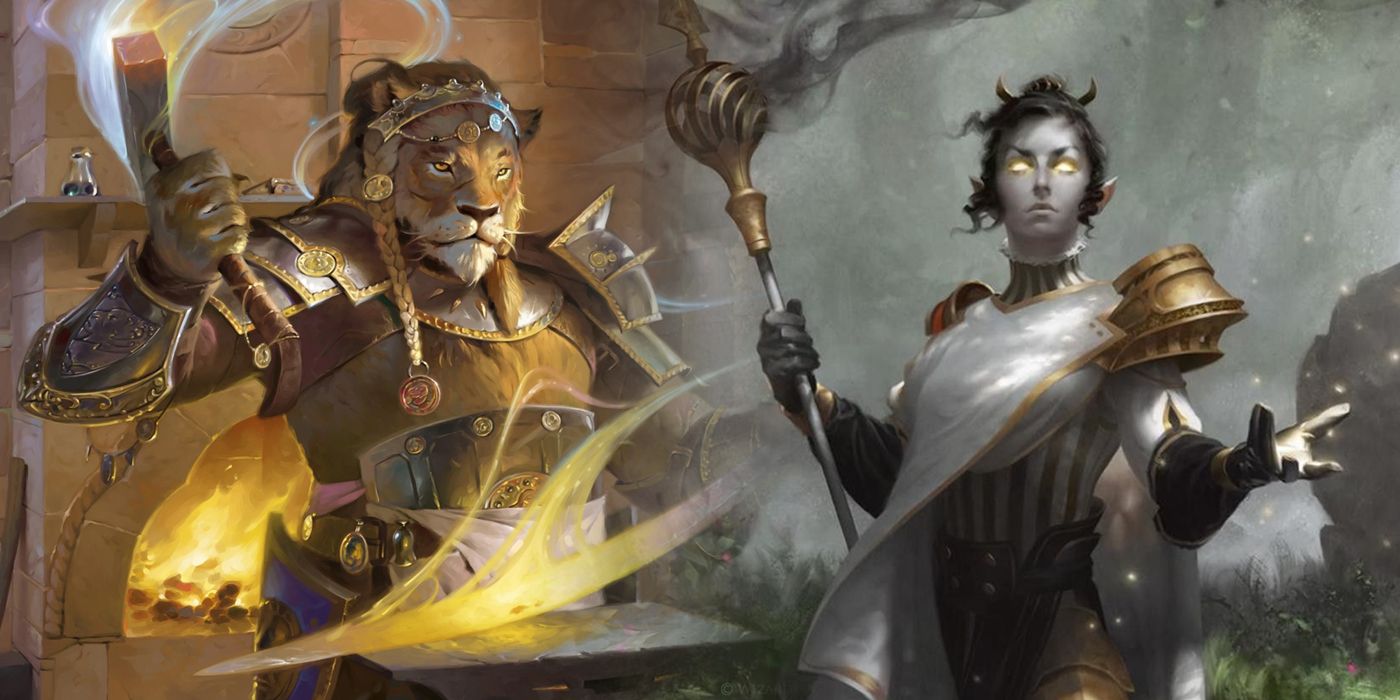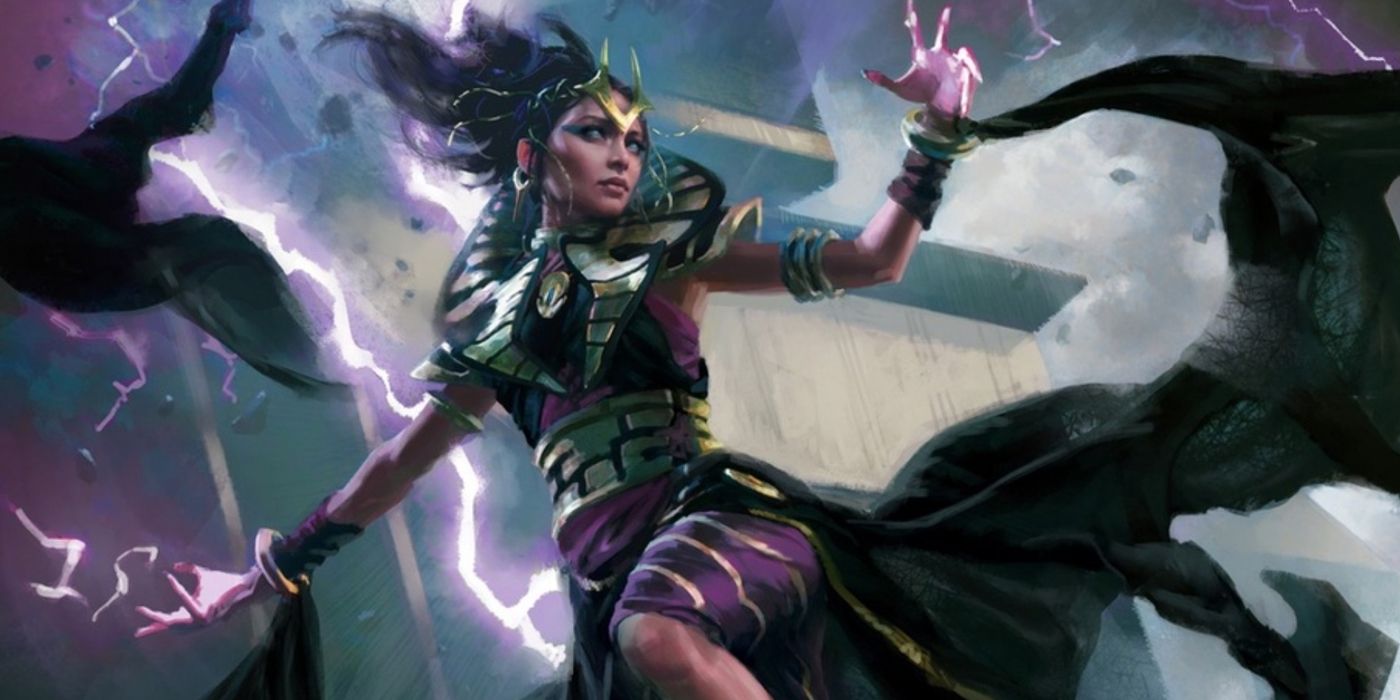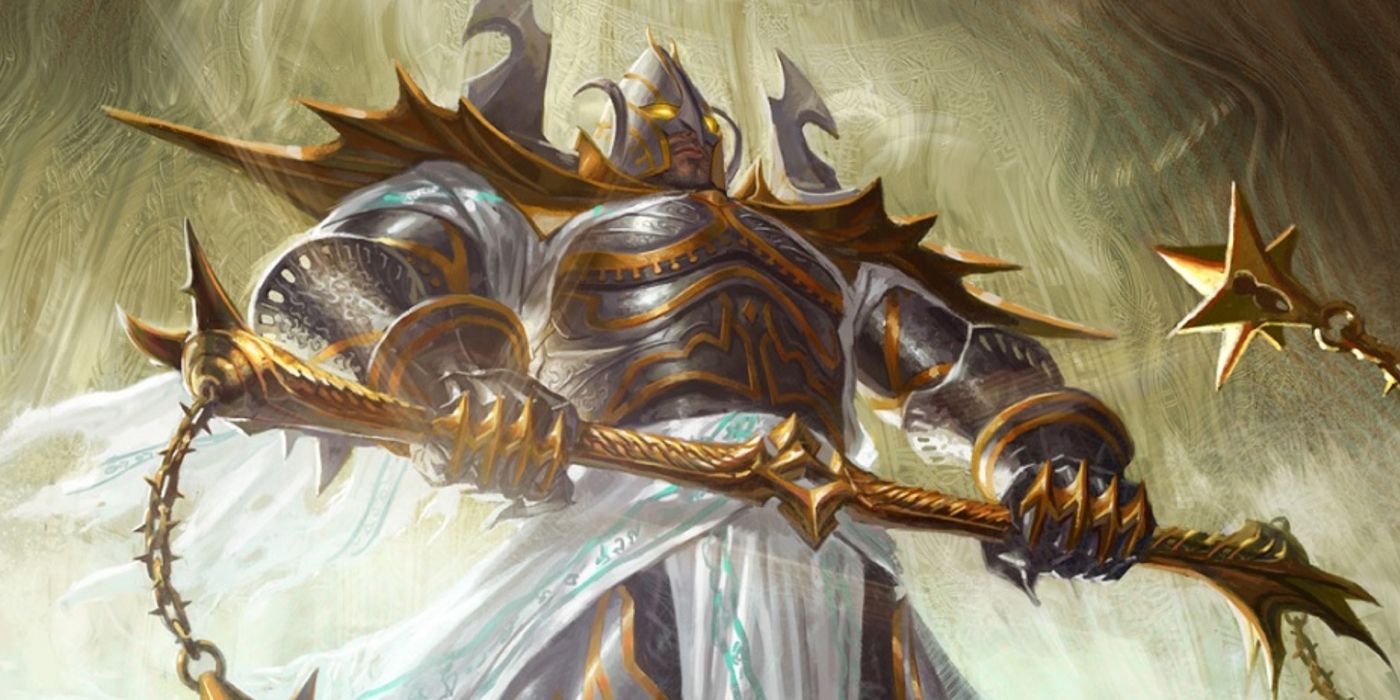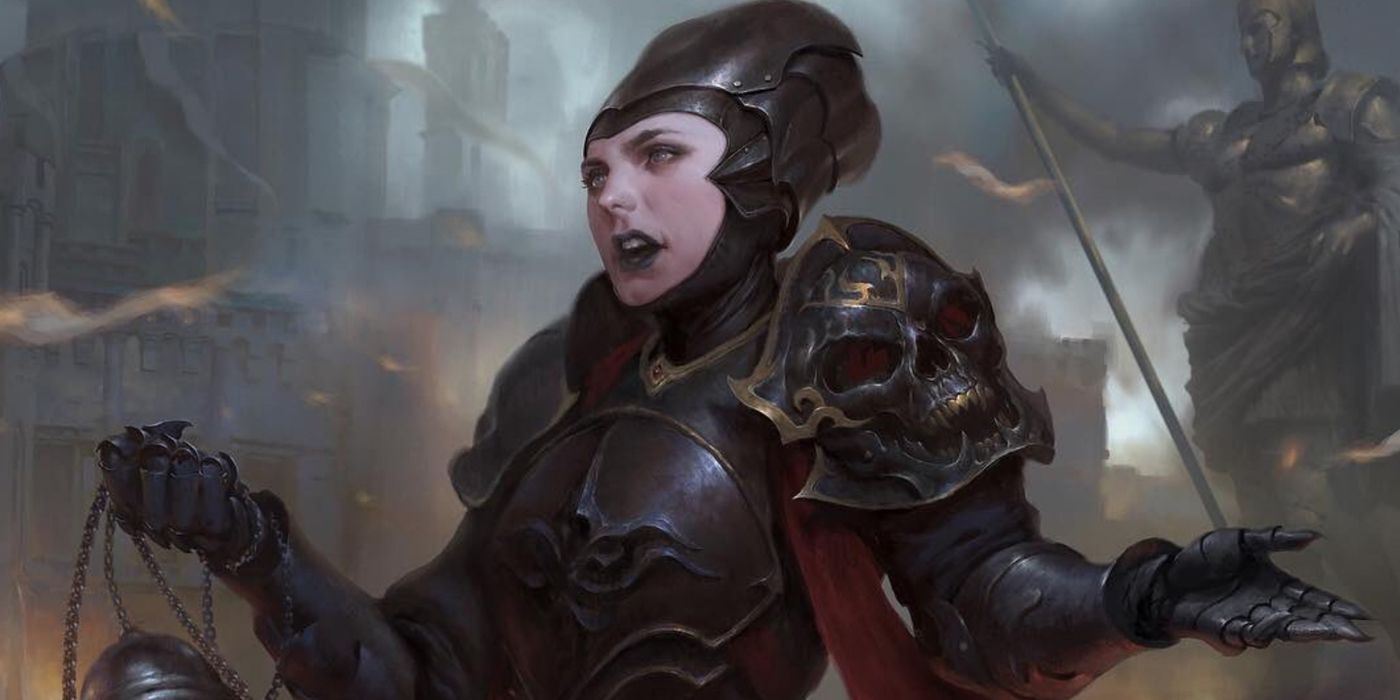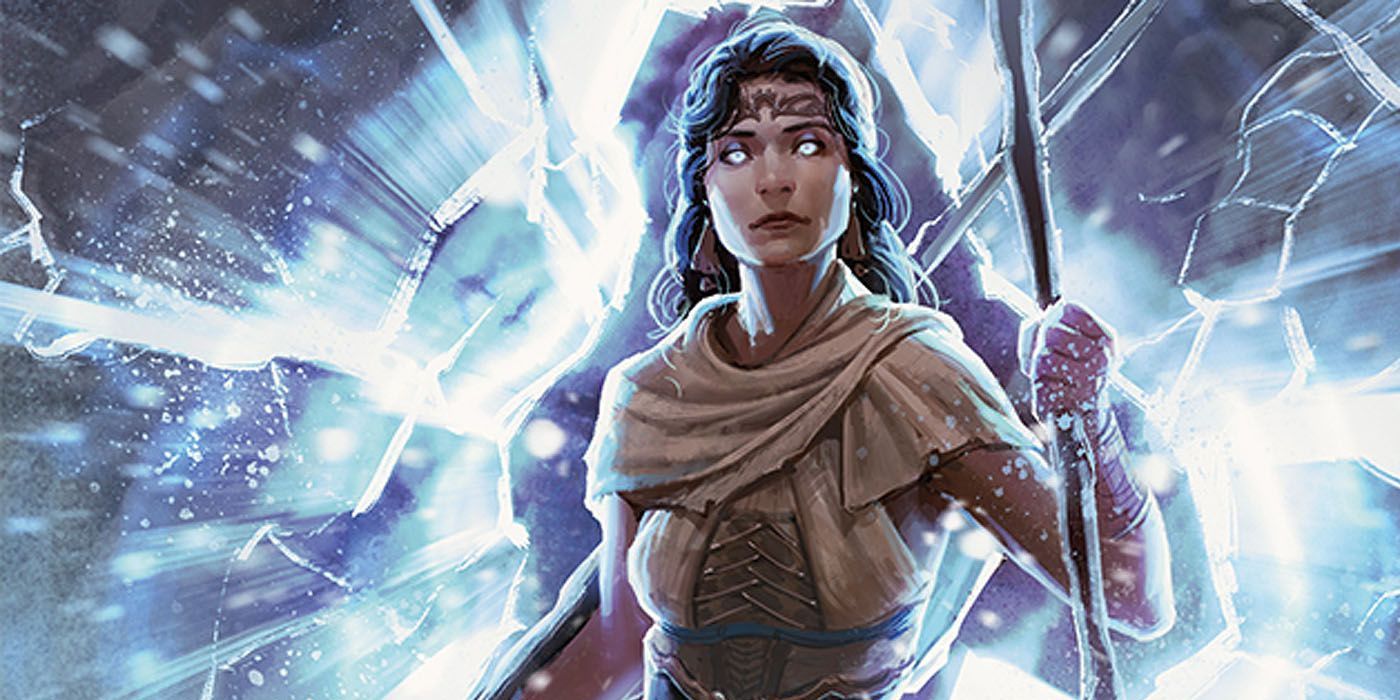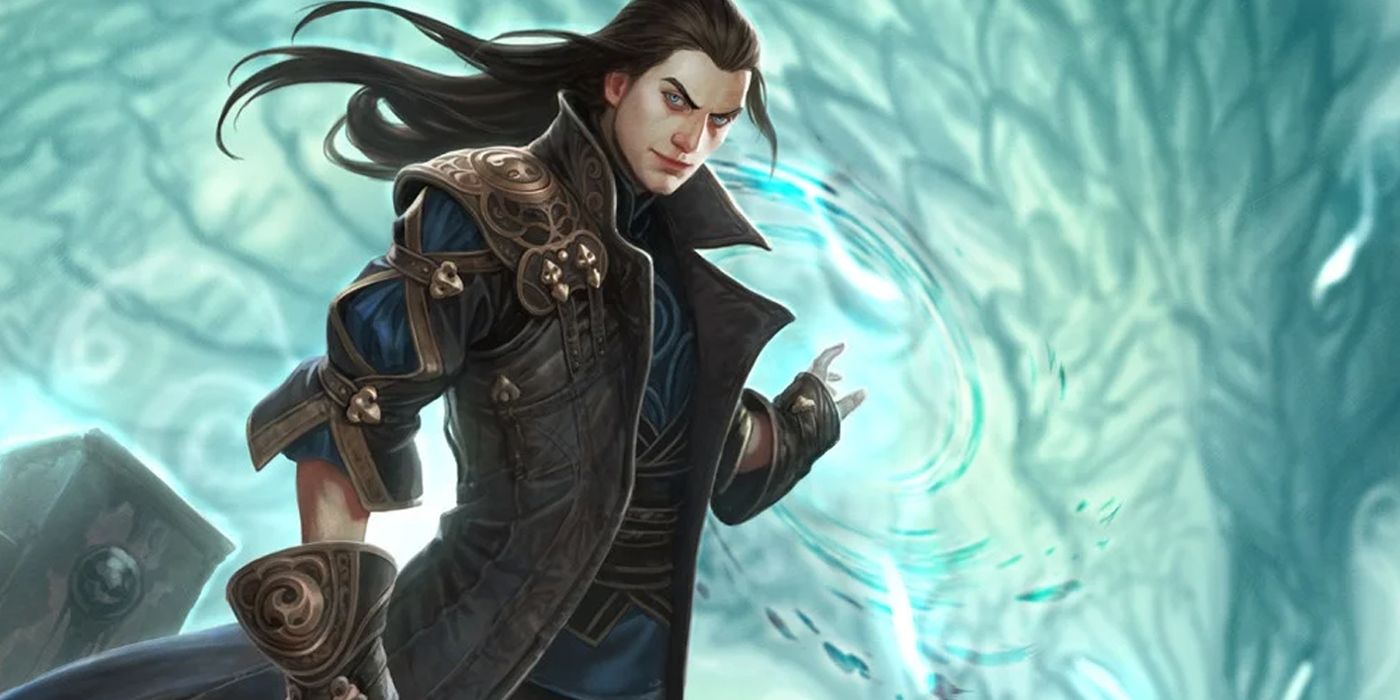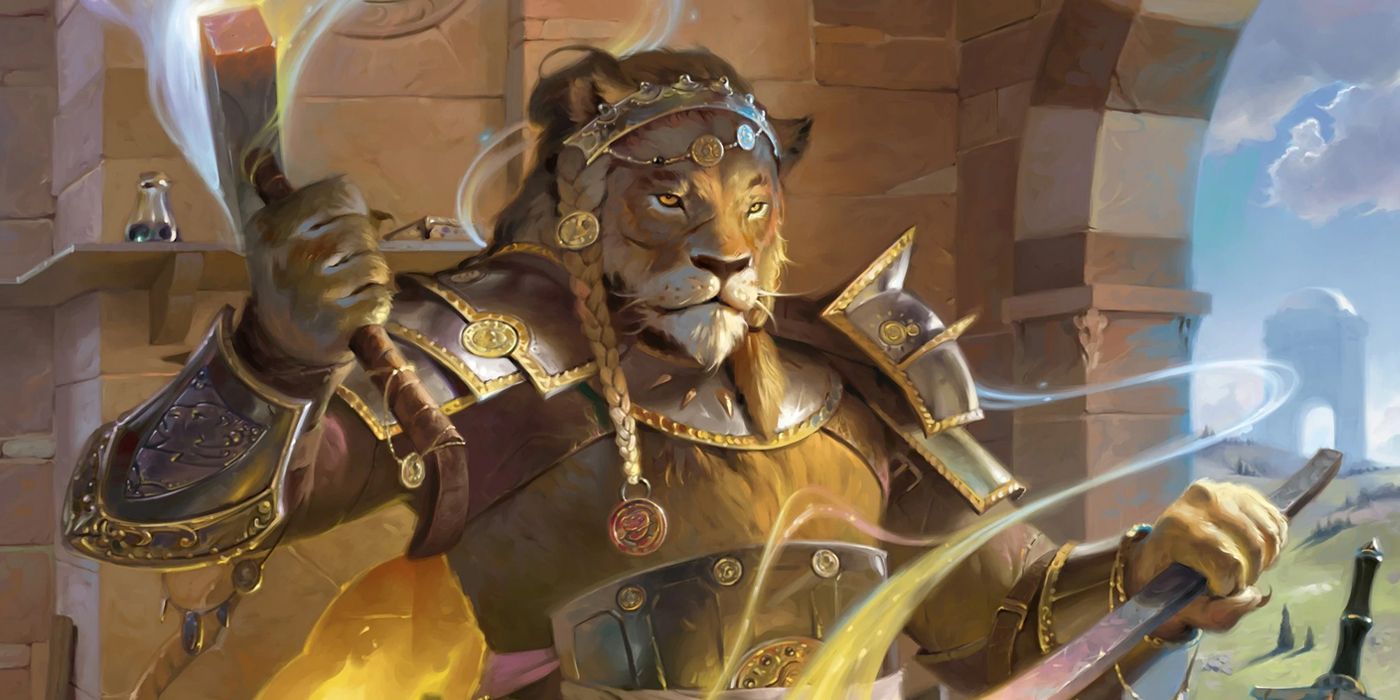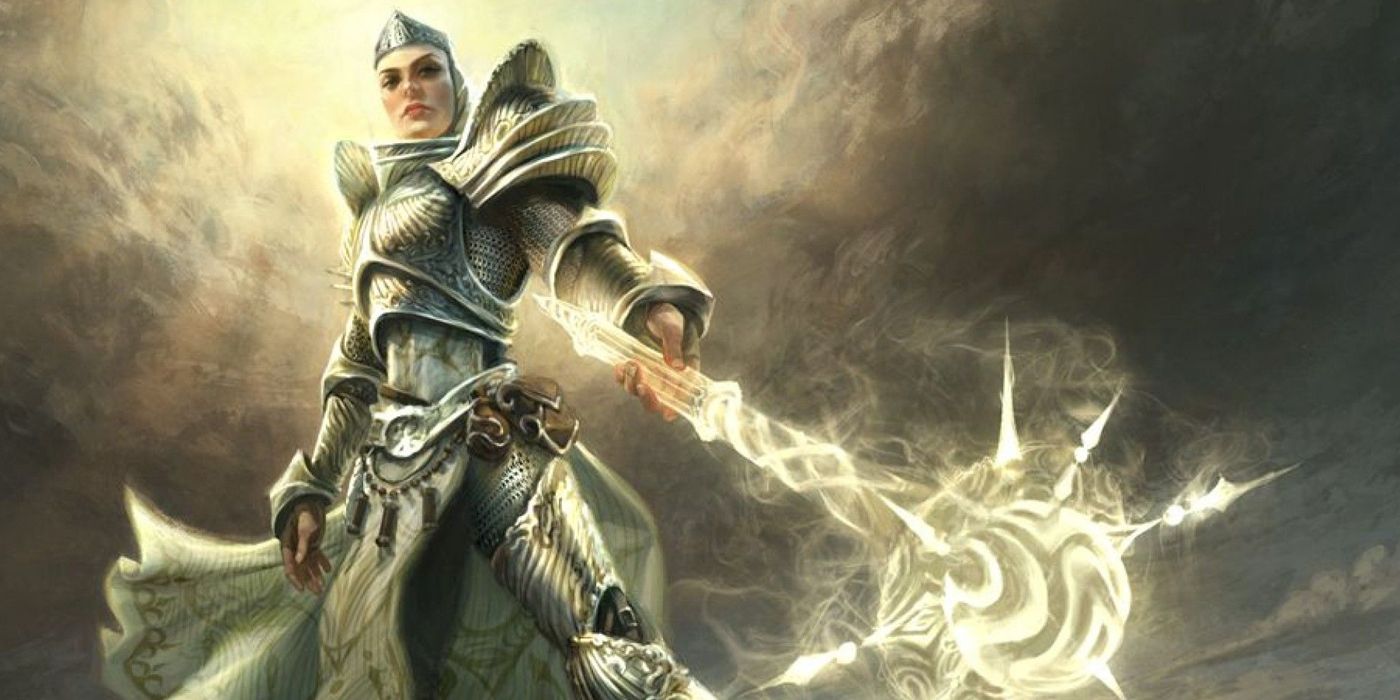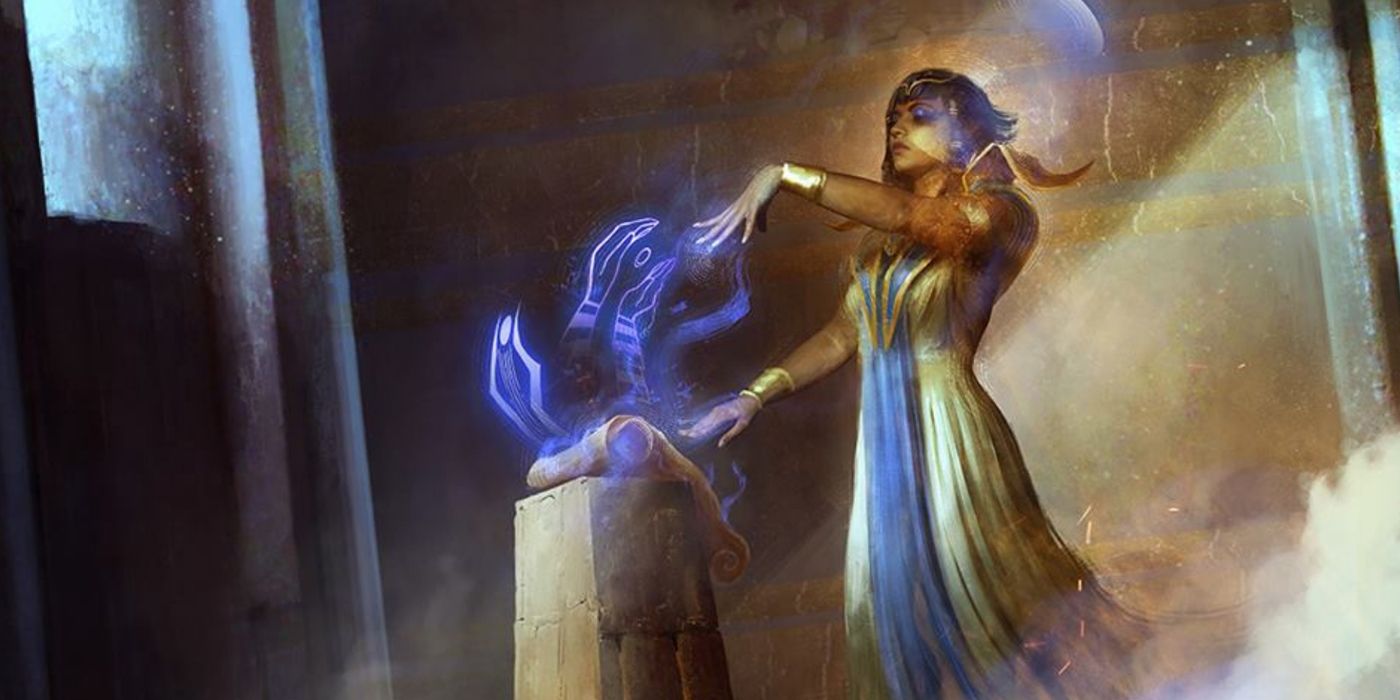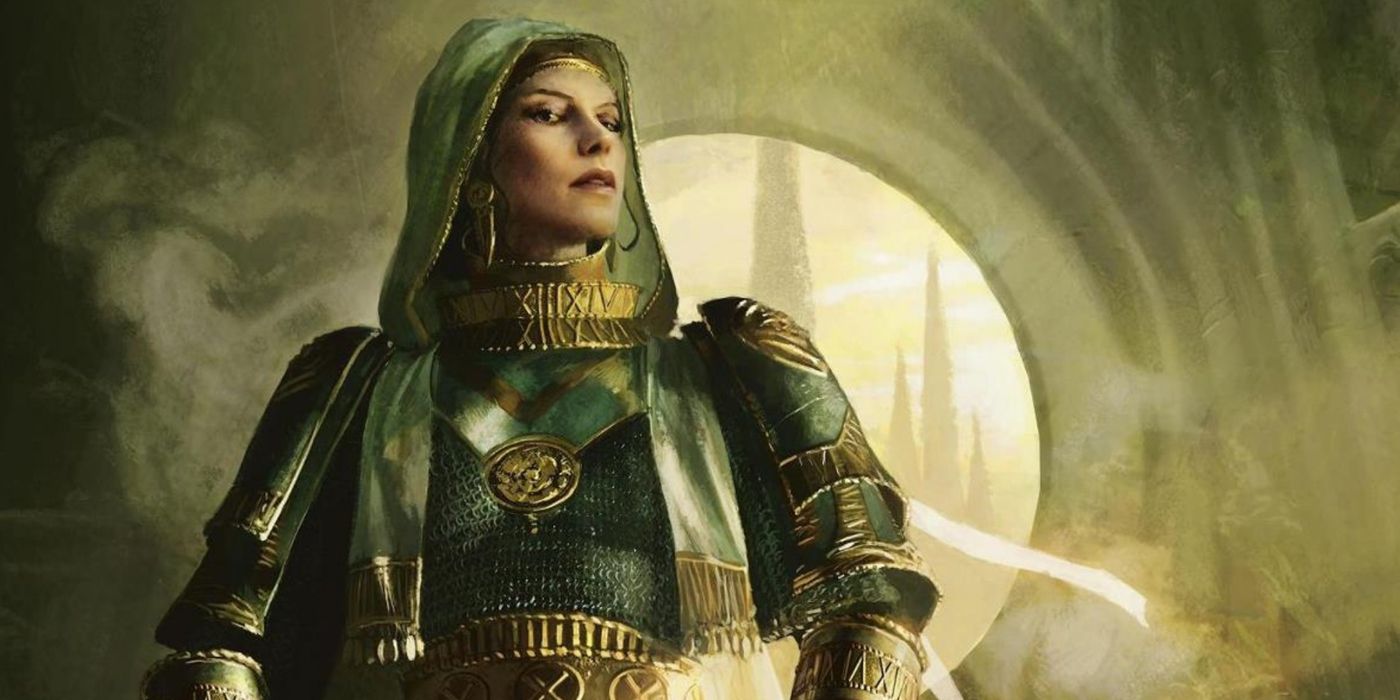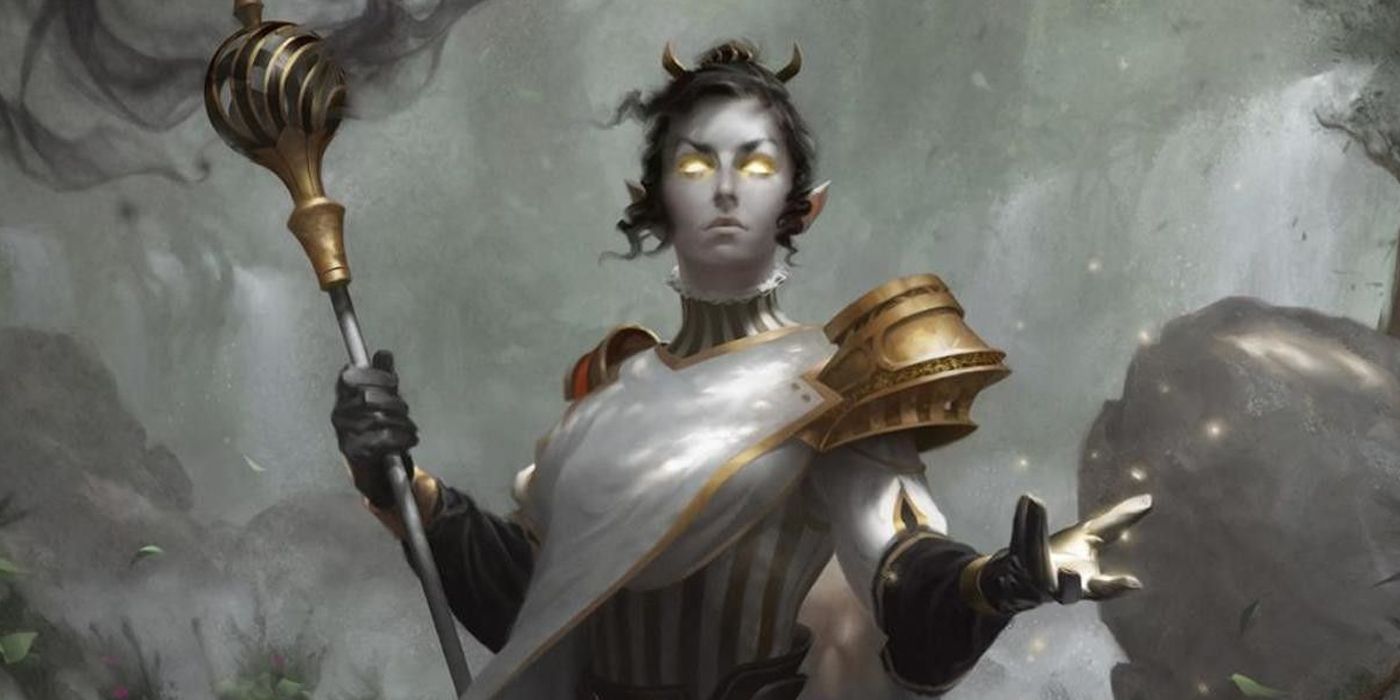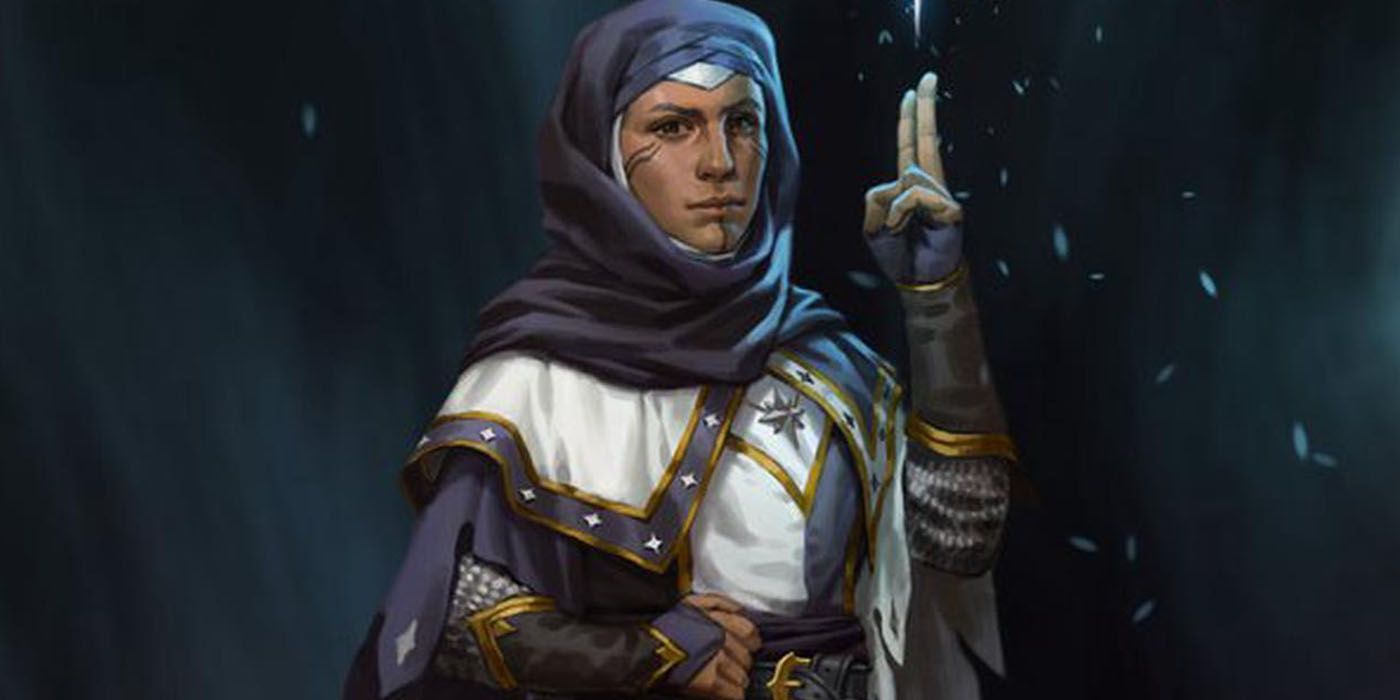Dungeons & Dragons is full of numerous ways players can customize their characters and make them their own. One of the most notable ways that a character is distinguished is through their class. A character’s class dictates everything from their strengths to the spells they are capable of casting. When it comes to traditional support classes, the most iconic is the cleric.
Devout followers of their patron deities, clerics in D&D5e are often associated with healing and support magic. However, not all 5e clerics are the same, as their spells and abilities are heavily influenced by the domain of their given god. These cleric domains have their own strengths and weaknesses and are quite distinct.
Updated on October 11th, 2021 by Scoot Allan: Though no new domains were added that weren’t present in the original list, various details had to be updated and tweaked for clarity’s sake and to better represent the current landscape of the game.
Updated May 11, 2022 by Declan Lowthian: Several new entries have been added to reflect cleric domains that are more powerful in non-combat situations than in combat.
Updated June 30th, 2022 by Isaac Williams: Every cleric Domain in D&D is now represented on this list, and their order has been changed to recognize the surprising power of some of these subclasses.
14 The Nature Domain’s Abilities Don’t Wholly Synergize
Every cleric Domain is themed around the concepts or elements representing their gods. Most also have one area of the game or one party role that they excel in, with all or most of the features creating a coherent playstyle and well-defined niche. This isn’t the case for the Nature Domain.
None of this Domain’s abilities are poor or unhelpful on their own, but they are very disparate. It gets Divine Strike without any ability to use martial weapons, the ability to give allies resistance to elemental damage without any other focus on buffing or support, and a very situational Channel Divinity that isn’t improved for another fifteen levels. The disorganized design creatures a Domain that is by no means bad, but can struggle to excel in any particular area.
13 The Tempest Domain Packs A Combat Punch, But Not Much Else
While clerics are traditionally one of the most support-based classes in D&D, there are numerous domains that provide a 5e cleric with noteworthy offensive abilities. One such domain is the Tempest Domain. Primarily the domain of weather gods, the Tempest Domain provides a cleric with numerous weather-related spells such as Fog Cloud, Gust of Wind, and Call Lightning.
Clerics of the Tempest Domain notably gain the Channel Divinity ability Destructive Wrath, allowing their thunder and lightning attacks to deal their maximum possible damage. However, they fall off outside of combat compared to other Domains, being something of a one-trick pony.
12 The War Domain Creates A Bolstering Martial Cleric, But Can Fall Off Later
Another offense-oriented cleric subclass, War Domain clerics gain some paladin-like abilities without needing to multiclass. In addition to proficiency with martial weapons and heavy armor, clerics of the War Domain gain access to spells such as Shield of Faith, Magic Weapon, and Crusader’s Mantle that allow the character to wade into melee alongside the fighter and barbarian.
War Domain clerics in 5e are more martially capable than many other Domains, gaining weapon attacks as bonus actions and a Channel Divinity ability which can add +10 to an attack roll. Later in the game, however, they can begin to drop off compared to other close combatants.
11 Clerics Of The Death Have Their Niche In Necrotic Damage
Not to be confused with the Grave Domain, the Death Domain provides clerics with abilities directly relating to the subversion of death as well as necromancy. Clerics of the Death Domain are some of the most offense-oriented clerics around.
These clerics gain the Channel Divinity ability Reaper, which allows them to deal substantial additional necrotic damage to foes they make melee attacks against. These clerics also gain access to numerous death-related spells such as False Life, Death Ward, and of course, the D&D favorite Animate Dead.
10 The Knowledge Domain Is Perfect For Intrigue
As might be expected, Knowledge Domain clerics specialize in skills and information. They may not be as combat oriented as the other cleric domains in D&D 5e, but they are the perfect choice for a more intrigue-based campaign.
Their spell list includes exploration-leaning spells like Identify and Augury, but also some control spells like Commad and Suggestion. They can also use their Channel Divinity to read the thoughts of other creatures, and ever-useful features like bonus Proficiencies ensure they are never not useful out of combat – while still having the combat potential of a base cleric.
9 The Trickery Domain Provides A Subtly Effective Touch
The Trickery Domain is one of the most unique domains available to clerics, providing them with numerous useful spells and utility that they wouldn’t otherwise have. The acolytes of deceptive gods, these clerics gain access to illusion spells such as Disguise Self and Mirror Image, both of which can be profoundly useful in their own right.
Additionally, clerics of this domain gain access to the Channel Divinity ability Invoke Duplicity, which allows them to create illusory copies of themselves with utility for all sorts of unconventional stunts and schemes. A D&D player looking to play a more subtle cleric should give this domain a look.
8 The Forge Domain Creates Well-Rounded Clerics
As the name may suggest, clerics of the Forge Domain worship gods of the forge, metalworking, and artistry. Clerics of the Forge Domain are an excellent choice when building a character, as they are capable of effectively filling both offensive and support-based roles.
Clerics of the Forge Domain gain proficiencies in heavy armor and artisan’s tools and can temporarily improve weapons and armor with their Blessing of the Forge ability. This enhances a piece of armor by +1 AC or provides a weapon with +1 to attack and damage rolls. Having access to a magic weapon at the early levels of D&D makes this domain extremely powerful on its own, but the Forge Domain also provides a cleric with excellent spells like Searing Smite and Protection from Energy.
7 Clerics Of The Light Domain Can Both Damage And Debuff Foes
Another damage-focused domain for clerics, the Light Domain follows deities of light, truth, and beauty. As one would expect, they gain access to numerous light-based abilities, immediately gaining the Light cantrip and the ability to impose disadvantage on an attacker by blinding them with bright light.
Clerics of the Light Domain have a quite offense-geared spell list, learning spells such as Burning Hands, Scorching Ray, and even Fireball. These clerics even can deal significant sums of radiant damage with their Channel Divinity ability, Radiance of the Dawn.
6 The Peace Domain Can Lord Over The Battlefield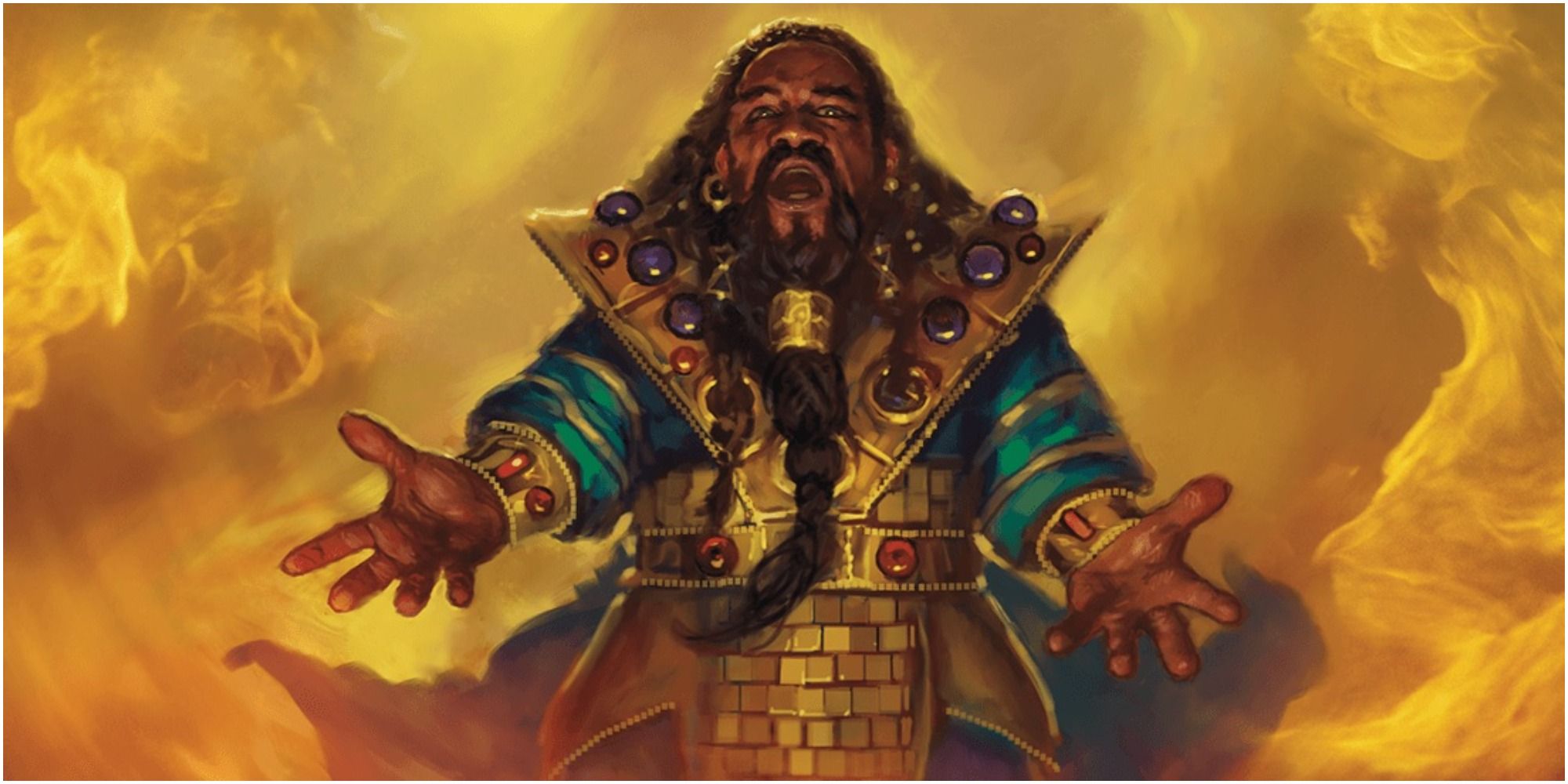
As their name indicates, the Peace Domain cleric doesn’t specialize in harming or killing foes. In order to end combats quickly and restore peace, however, they have a toolkit dedicating to keeping allies safe and giving them a range of options they can use to be more effective in combat.
The Peace Domain cleric also excels at forming bonds between allied creatures, making them more effective as long as they are near each other, and allowing them to share the damage they take between each other. With a number of useful buff and support spells, the Peace Domain more than equips their party to end things quickly.
5 Arcana Domain Clerics Bring Unusual Spellcasting And Magical Versatility
One of several subclasses in D&D 5e that allow the character to gain some traits of another class without multiclassing, the Arcana Domain cleric gains some of the casting power of a wizard. They notably gain access to the spells Magic Missile, Detect Magic, and Dispel Magic, which can each be incredibly helpful in numerous situations.
As if their excellent spell list wasn’t enough, clerics of the Arcana Domain gain access to two wizard cantrips to improve their versatility both in-combat and out-of-combat. What sets them apart, however, is late-game access to four wizard spells entirely of their choice – up to and including Wish, the best spell in the game.
4 Grave Domains Are Excellent Healing Casters
As opposed to the Necromancy and damage-oriented Death Domain clerics, Grave clerics reflect a more wholesome and productive relationship with death. They focus on supporting allies to keep them alive, having several abilities based around helping characters who are close to death.
With some of the most reliable healing in the game on unconscious allies, as well as the ability to negate critical hits, the Grave cleric excels at stopping creatures from succumbing to mortal wounds. With a bonus spell list that contains useful support spells, they’re always a welcome addition to a party.
3 Clerics Of The Order Domain Are Some Of The Strongest Support Characters
Order clerics are among some of the strongest support characters in all of D&D, in no small part thanks to their Channel Divinity ability, Order’s Demand. This feature can potentially end an encounter before it begins as the cleric charms everyone within 30 feet of them and forces them to drop their weapons.
Order Domain clerics can act as useful force-multipliers in combat, giving allies additional attacks when they cast useful healing or buffing spells. In addition, they can hold their own when in melee combat, although they are hindered by lacking proficiency in martial weapons.
2 Clerics Of The Life Domain Are Among The Most Competent Healers In D&D
When players think of clerics, clerics of the Life Domain are often the first to come to mind, and for good reason. Clerics of the Life Domain worship gods of life, the sun, agriculture, and healing, and are among the most competent healers in D&D.
These clerics learn a plethora of excellent healing and revival spells from Cure Wounds to Revivify to even Raise Dead. To make them even better, all of their healing spells restore extra hit points based on the spell’s level. It’s not difficult for a Life Domain cleric to completely restore another character’s hit points with only a single spell slot.
1 The Twilight Domain Can Sustain The Party Through Nearly Anything
Introduced in Tasha’s Cauldron of Everything, the Twilight cleric is mostly a generalist all-rounder, with a grab bag of abilities themed around darkness and dim light. However, its unique Channel Divinity is enough to set it apart from many others, and enough to alarm some in the D&D community regarding its power.
The Twilight Sanctuary ability creates a sphere around the cleric which provides allies with temporary hit points every turn. Being refreshed for each ally on the end of their turns, this ability can negate a surprisingly huge amount of enemy damage, making the party several time more durable than average. The subclass’ other abilities, none of them weak, are just the final pieces of a very powerful Domain.
